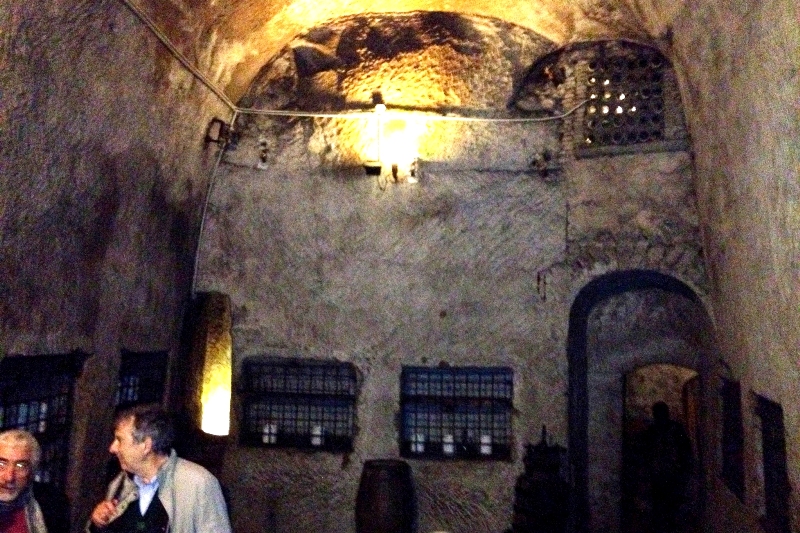Present Status
Naples is a city which exists on two levels, one above and one beneath the surface. In the 60s and 70s a group of speleologists explored and gave back the underground heritage to the city of Naples, a part of which was opened to the public. Nowadays it is possible to visit part of the ancient cisterns in two routes of the so the called “Underground Naples”.
Actually, Naples Hypogea is one of the most interesting, studied and visited sites. So, one can see an example of a Greco-Roman aqueduct, walk around the huge cisterns that used to supply fresh water to the palaces and villas above and have an idea of the unbelievable labyrinth of wells channels and reservoirs.

Hydria Virtual Museum
The first entrance to the fascinating guided tour is in piazza San Gaetano. Another tour is through the entrance in vico Santa Anna di Palazzo that allows visitors down a square staircase built in World War II and leading into an actual air raid shelter, 40 m beneath the surface.
A Museum of the Naples Underground has recently opened in Piazza Cavour. It is in a huge underground tufo, or yellow sandstone quarry and contains incredible objects found by members of the association “Naples Underground” during their more than 50 years of exploring the labyrinth beneath Naples.
But what became of the Bolla streams?
The branch that fed mills is still in use while there is not much left of the branch that entered the city.
Ancient ruins of Augustan or Claudius Aqueduct are under the supervision of cultural heritage authorities and include lots of archaeological spots including the Piscina Mirabilis; Cento Camerelle and Crypta Napolitana.
In spring 2013 the author of the present case study visited several cavities of the underground Naples to complete her research.





